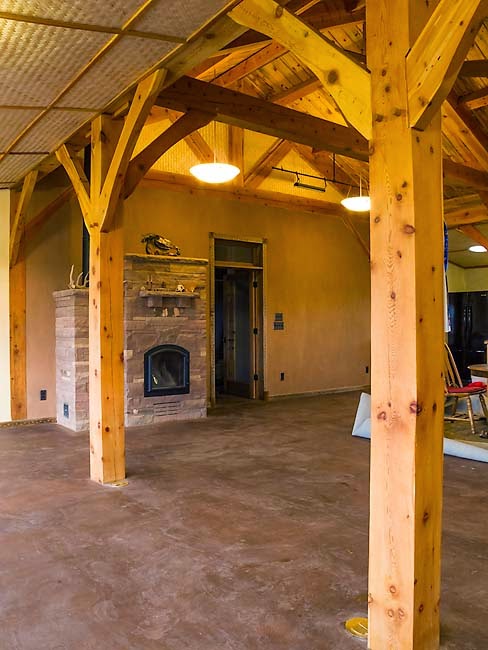Finally, our three-year turned five-year plan is drawing to a close. Scott and I often find ourselves looking around our house of straw, wondering how it all happened. Did we really undertake the building of a home, under our own direction? And can it be possible that a moving van will arrive at our Logan house on June 4, load up the belongings we haven't yet moved and whisk everything away to meet us in Torrey? Indeed, the answer is yes, but there are still many things to be completed.
One of those things is the small bathroom in Scott’s office. We had to leave it unfinished (straw and lath walls – just a toilet and a sink) until the end because we needed the plumbing while we were completing the rest of the house. It was the only room that could provide hot water and heated restroom facilities during construction. Now, as moving time draws near, we are reminded of our large project as we repeat it on a much smaller scale in this one room.
It's comforting to begin work in this space, knowing that, this time, we actually know how it should be done.

First I make the straw wall as vertical and flat as possible by removing bulges in the bales.
There is a large hole in one bale, which Scott fills with cob - a thick mixture of clay and straw.
Scott applies slip by hand.
When we plastered the rest of the house, we used a stucco sprayer powered by a compressor. Due to the small size of this bathroom, hand application seemed more appropriate and not very time consuming. Plus, it was much less messy than the sprayer. We were happy with this option since the house is essentially done, and we didn't want to cover our finished walls and floors with new plaster.
Still, we covered the posts and knee braces with painter's tape and plastic to keep mud off of the wood.
Scott applied the scratch coat next, filling in holes in the straw and covering the bamboo poles as he went.
This is the section of wall you see above, but now the large hole is gone and the bamboo is covered.
Using a metal comb (which we call a plaster scratcher), Scott scarifies the finished surface of this first coat of plaster.
This texture, or key, makes it possible for the next coat of plaster to stick to the scratch coat.
We put finishing touches on the lath around the water pipe and the drain access...
and attach diamond lath to the wall for the pocket door.
The major work of this room is finished. It seems a little strange to say that the "only" things left are applying final plaster coats, painting the walls, covering ceiling with bamboo matting, building a sink cabinet and, finally, reinstalling the sink and toilet. We estimate it will take a week to ten days from this first plaster to the installation of fixtures. A small project indeed.













































































